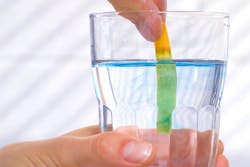ST. PAUL, Minn. — Feb. 11, 2016 — The Minnesota Department of Health (MDH) has discovered procedural errors in tests of drinking water supplies by its Environmental Health Division, according to a press release.
Minnesota Health Commissioner Dr. Ed Ehlinger said in the release that procedures associated with the handling of some drinking water samples were inconsistent, and in some cases inadequate. The risk to public health is low, but the health department has immediately strengthened and standardized the procedures and will conduct further tests as needed to ensure accurate water quality assessments.
“While the situation as a whole would not suggest an increased risk for most communities, we want to ensure we have the highest level of reliability in our data on drinking water quality,” Ehlinger said in the release. “This inconsistency is unacceptable and should not have happened. We’re moving swiftly to correct it.”
The problem was identified following an internal review which found that some samples from public drinking water systems were not kept at the proper temperature. The issue may date back to the early 1990s, when updated guidance from the U.S. Environmental Protection Agency (EPA) was inconsistently implemented.
“These practices should have been uniformly modified to comply with up-to-date EPA guidelines, and the division did not do so,” explained MDH Environmental Health Division Director Tom Hogan in the release. “We take our responsibilities in this area very seriously, and we deeply regret this oversight. We are taking immediate steps to set this right.”
The concern involves the holding temperature of water samples taken to determine the presence of organic chemicals, such as fertilizers, solvents and common household chemicals, noted the release. It also potentially involves samples taken to determine the presence of cyanide and nitrite — inorganic compounds for which holding temperature may be an issue.
It does not involve samples taken to analyze for the presence of viruses or other infectious agents, fluoride, radionuclides, arsenic, lead, mercury or other heavy metals.
Hogan noted in the release that other state agencies have taken similar tests of public waters which indicate that the health risk is limited.
You can find the entire release here.


